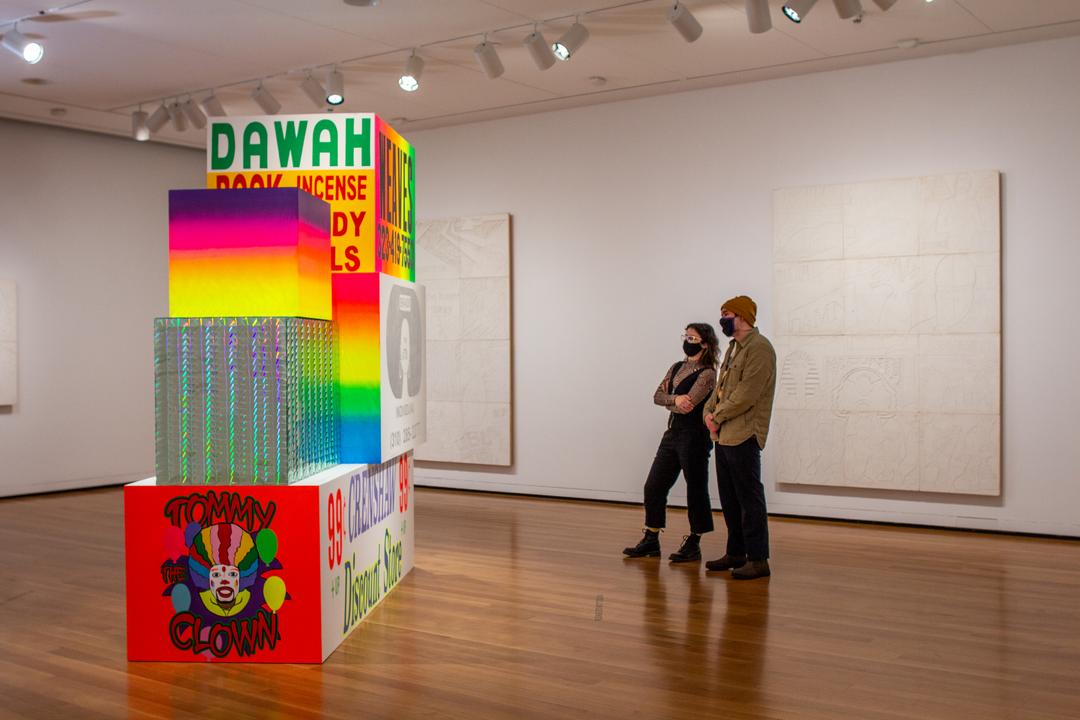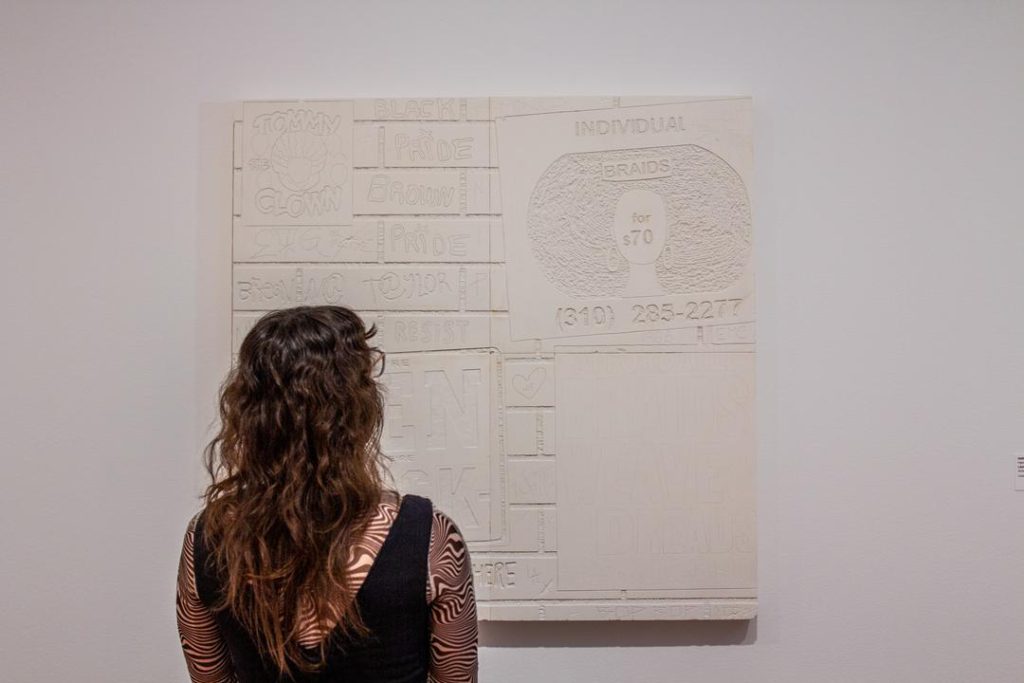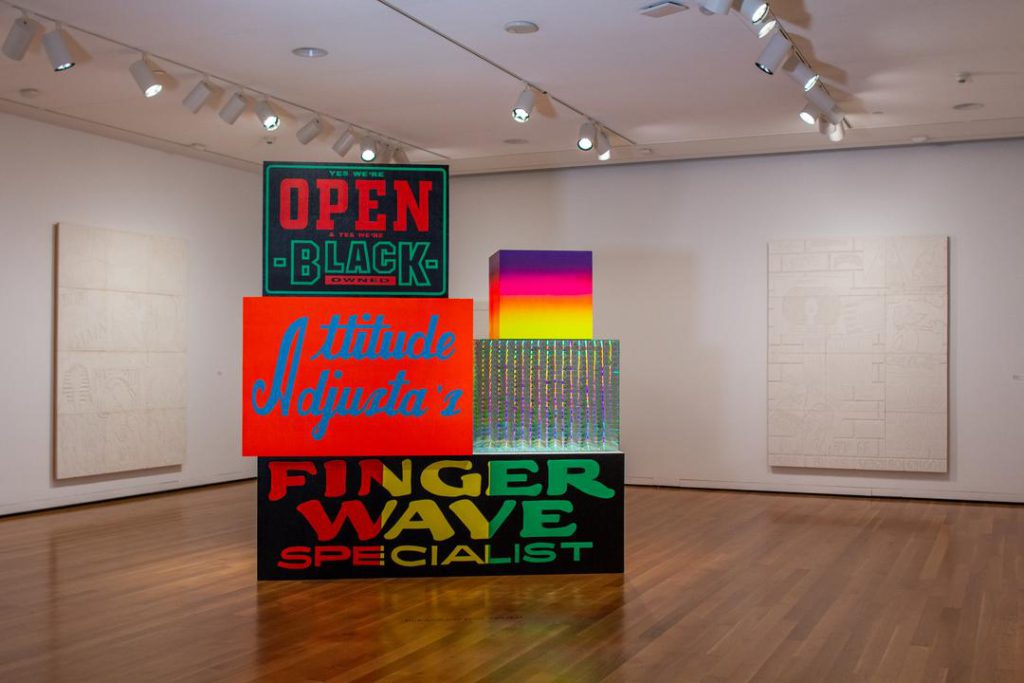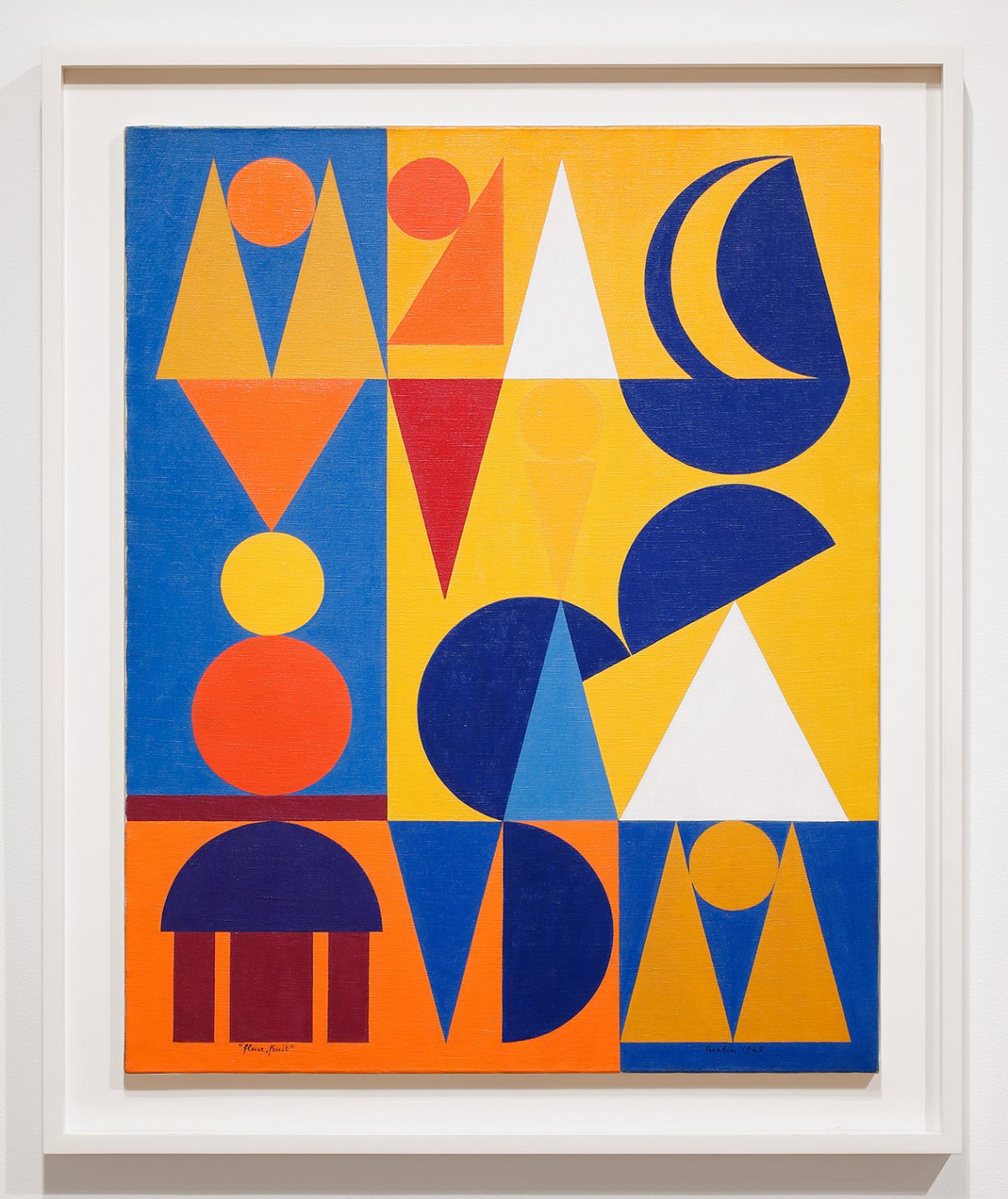#SAMSnippets: Lauren Halsey
In celebration of Black History Month this February, we gave our Instagram followers an up-close look at artworks in Lauren Halsey, on view at our downtown location through July 17. Check back next month, as we choose a new SAM gallery to walk through as part of our live #SAMSnippets series and appreciate art from any location!
Highly attuned to growing gentrification in her neighborhood of South Central Los Angeles, 2021 Gwendolyn Knight | Jacob Lawrence Award winner Lauren Halsey, who studied architecture and art, celebrates Black culture by making space for representations of the people and places around her as a method of creative resistance. In her installation at SAM, the artist shows works in which proud declarations of Black-owned businesses intermingle with images of Egyptian pyramids, the Sphinx, pharaohs, and queens, all drawn from a personal archive Halsey has developed through research and community interactions.
The tour begins with a look at four carved gypsum relief panels which line the perimeter of the gallery. These four works—all untitled and created between 2019 and 2022—are reminiscent of temple walls. Each of these panels features fictional advertisements for local Black-owned businesses in South Central Los Angeles.
The final work shown in the video acts as the centerpiece to the gallery. This large-scale sculpture of colorful boxes stacked atop one another represent the metaphorical building blocks for future architecture while resonating with imagery from the past.
Through her archive and daily life, Halsey strives to record the unique expressions of her neighborhood before the forces of capital erase them. Placing these hyperlocal portraits, signs, and imagery in the context of real and imagined histories, the artist remixes ancient and contemporary cultures into a unifying vision.
– Lily Hansen, SAM Marketing Content Creator
Video Artworks: Untitled, 2020, Lauren Halsey, born 1987, hand-carved gypsum on wood, 48 x 48 x 2 7/8 in., © Lauren Halsey, Courtesy of the artist and David Kordansky Gallery, Los Angeles. Untitled, 2019, Lauren Halsey, born 1987, hand-carved gypsum on wood, 48 x 48 x 2 7/8 in., © Lauren Halsey, Courtesy of the artist and David Kordansky Gallery, Los Angeles. Untitled, 2020, Lauren Halsey, born 1987, hand-carved gypsum on wood, 95 1/4 x 71 3/4 x 3 in., © Lauren Halsey, Courtesy of the artist and David Kordansky Gallery, Los Angeles.
Untitled, 2022, Lauren Halsey, born 1987, hand-carved gypsum on wood, 48 x 48 x 2 7/8 in., © Lauren Halsey, Courtesy of the artist and David Kordansky Gallery, Los Angeles. We Are Still Here, 2021, Lauren Halsey, American, born 1987, acrylic, enamel, metallic leaf, and CDs on Gator Board and wood, 108 × 103 × 41 1/4 in., © Lauren Halsey, Courtesy of the artist and David Kordansky Gallery, Los Angeles.



